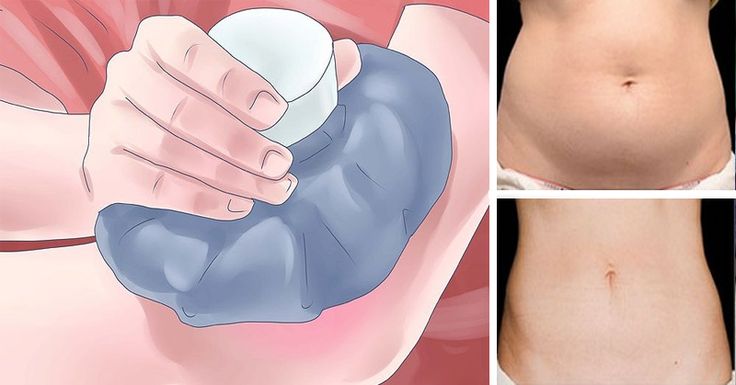The Science Behind Ice Packs for Weight Loss
Ice packs for weight loss have become an intriguing trend in the ever-evolving world of fitness and wellness. Gone are the days when ice was merely used to chill beverages; now, it is being hailed as a revolutionary tool in the quest for shedding those stubborn pounds. But how exactly does this icy technique work? Can simply applying a frozen pack to certain parts of our body really help us melt away fat?
In this article, we will delve into the science behind ice hack for weight loss , exploring their potential benefits and effectiveness, while also uncovering any possible risks or limitations. So, get ready to cool down and discover the chilling truth about using ice packs as your new weapon in the battle against unwanted adipose tissue.
The Benefits of Using Ice Packs for Weight Loss

Using ice packs for weight loss is a topic that has gained some attention, but it’s important to approach it with a critical mindset and a clear understanding of the science behind it. While there are claims that ice packs can help with weight loss, the actual benefits may be limited, and some of these claims might be based more on anecdotal evidence than scientific research. Here are some potential benefits and considerations:
Calorie Expenditure: The idea behind using ice packs for weight loss is that the body needs to burn more calories to generate heat and maintain a stable internal temperature when exposed to cold temperatures. This process is called thermogenesis. While there is some truth to this concept, the actual calorie expenditure from using ice packs might be relatively small and not sufficient for significant weight loss.
Spot Reduction: Some proponents of ice pack therapy claim that applying cold to specific areas of the body can lead to localized fat loss in those areas. However, spot reduction is a myth. The body tends to lose fat uniformly across the entire body rather than just from the area being targeted.
Reduced Appetite: Cold exposure can potentially suppress appetite and cravings. Some people might find that using ice packs temporarily reduces their desire to eat, which could contribute to a reduction in overall calorie intake. However, this effect is likely to be temporary and might not result in sustainable weight loss.
Inflammation Reduction: Cold therapy might help in reducing inflammation and swelling in certain cases. Chronic inflammation can interfere with weight loss efforts, so if cold therapy helps in managing inflammation, it could indirectly support weight loss efforts.
Metabolic Activation: Some research suggests that exposure to cold temperatures can activate certain types of fat cells (brown adipose tissue) that are more metabolically active and can contribute to energy expenditure. However, the overall impact on weight loss is still a subject of ongoing research.
How Ice Packs Can Increase Calorie Burn
Ice packs are commonly used to reduce swelling and alleviate pain, but did you know they can also help increase calorie burn? When applied to specific areas of the body, ice packs can stimulate thermogenesis – the process of generating heat in the body. This occurs as a response to the cold temperature, leading to an increase in metabolic rate and calorie expenditure.
One area where ice packs can be particularly effective is the brown adipose tissue (BAT), also known as good fat. Unlike white fat, which stores energy, BAT actually burns calories to generate heat and regulate body temperature. By applying ice packs to regions rich in BAT, such as the neck or upper back, you can activate this tissue and ramp up your calorie burn.
Furthermore, using ice packs during exercise may lead to even greater benefits. As our body works harder during physical activity, it generates more heat. By strategically placing ice packs on certain areas while exercising – such as around the waist or thighs – you create a localized cooling effect that prompts your body to work even harder to warm itself up. This increased effort translates into more calories burned and a higher overall metabolic rate long after your workout is finished. So next time you hit the gym or go for a run on a hot day, consider incorporating ice pack therapy for an added boost in calorie-burning potential.
Different ways to use ice packs for weight loss
One unconventional way to utilize ice packs for weight loss is by incorporating them into your exercise routine. Before starting your workout, wrap a cold pack around areas of your body where you tend to accumulate excess fat, such as the stomach or thighs. This can help stimulate the breakdown of stubborn fat cells as well as provide a numbing effect that may prevent discomfort during exercise. The cold temperature also forces your body to work harder to maintain its core temperature, thereby burning more calories in the process.
Another interesting application of ice packs for weight loss is through short-term fasting in combination with localized cryotherapy. By using an ice pack on your midsection while intermittently fasting for short periods, such as 16-20 hours per day, it’s believed that the cold exposure increases metabolic rate and enhances fat oxidation even further. This can potentially lead to enhanced weight loss results compared to regular fasting alone.
Additionally, you can try using ice packs on specific acupressure points related to digestion and metabolism for targeted weight loss benefits. These points include the area between the upper lip and nose (known as Renzhong), located directly below the kneecap (called Zusanli), and halfway between the navel and pubic bone (Zhongwan). By applying an ice pack or chilled towel on these points for several minutes each day, you may experience increased energy expenditure and improved digestion, which could contribute to overall weight loss goals.
Final Thoughts
In conclusion, ice packs may have some potential benefits for weight loss, but they should not be seen as a magic solution. While the cold temperature can increase calorie burn and potentially reduce inflammation, it is important to remember that sustainable weight loss requires a balanced diet and regular exercise.
Additionally, there is limited scientific evidence supporting the effectiveness of ice packs for weight loss. Therefore, it is recommended to approach their use with caution and consult with a healthcare professional before incorporating them into your weight loss plan. Instead of relying solely on ice packs, focus on making long-term lifestyle changes that promote overall health and well-being.
FAQs
Where should I apply the ice pack for maximum weight loss benefits?
You can apply ice packs to areas with stubborn fat deposits, such as the abdomen, thighs, or love handles.
How long should I use an ice pack for weight loss?
Start with 15-20 minutes per session and gradually increase up to 30 minutes, ensuring you don’t exceed the recommended time to avoid skin damage.







